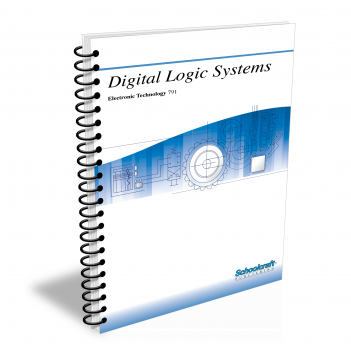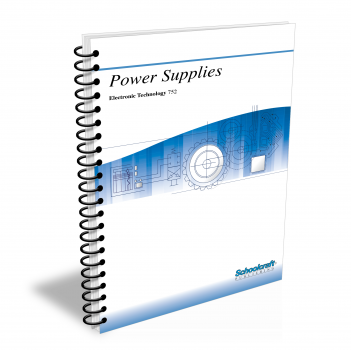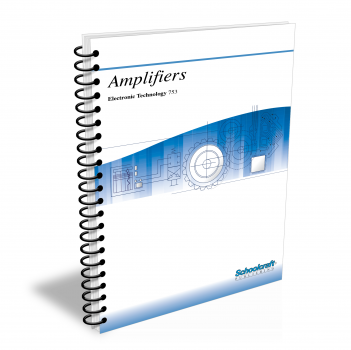Digital Logic Systems

Course Number: 791
The Digital Logic Systems textbook compares analog and digital switching circuits. It explains Boolean logic functions and describes TTL and CMOS logic, as well as IC logic devices. It explains how flip-flops, clock circuits, counters, multiplexers, and memory circuits work, and describes the sections and interfaces in functional logic systems, including microprocessors. It concludes by describing proper methods for detection and correction of common fault potentials.
Does your curriculum require additional topics not included in this textbook? Build a customized version of the Digital Logic Systems textbook below.
Recommended Contact Hours – 8
Preview a Chapter
Available Supporting Material
- Table of Contents
- Exam Copies
- Suggested Titles
Table of Contents
Chapter 1: Digital Logic Fundamentals
Topics: Digital logic; Boolean algebra; Logical AND, OR, NOT function; Positive and negative logic; NAND logic; Combining logic circuits; TTL logic; IC logic devices
Learning Objectives:
- Explain the difference between digital and analog circuits.
- Describe AND, NOT, and OR logic functions.
- Explain how solid-state switches can perform logic functions.
- Compare equivalent NAND and NOR gates using positive and negative logic.
- Discuss the importance of TTL and CMOS circuits.
Chapter 2: Logic Building Blocks
Topics: Sequential logic; Flip-flops; Clock circuits; Schmitt triggers; Frequency dividers; Pulse counters
Learning Objectives:
- Describe the function of a logic clock.
- Explain the operation of a flip-flop.
- Discuss the differences among clocked R-S flip-flops, D-latches, and J-K master-slave flip-flops.
- Explain how to convert between the decimal and binary number systems.
- Discuss the use of BCD and the octal and hexadecimal number systems.
Chapter 3: Medium- and Large-Scale ICs
Topics: Counters; Serial vs. parallel data transmission; Registers; Multiplexers; Decoder/demultiplexers; Arithmetic circuits; LSI memories
Learning Objectives:
- Explain the operation of each of the following counters: ripple, BCD, synchronous, and up/down.
- Describe the operation of a shift register.
- Discuss the difference between multiplexers and decoders/demultiplexers.
- Define the terms read, write, serial access, and random access as they apply to memories.
- Discuss the purposes of RAM and ROM devices.
Chapter 4: Functional Logic Systems
Topics: Logic subsystems; Microprocessors; I/O subsystems; Noncontact switches; Multiple-bit I/O devices; Data codes, displays, and transfer
Learning Objectives:
- Describe the sections of a basic logic system.
- Compare a ROM, a PROM, and a PLA.
- Name the basic parts of a microprocessor.
- Describe common kinds of I/O interfaces and data displays.
Chapter 5: Troubleshooting Logic Systems
Topics: Gathering information; Isolating the problem; Localizing the trouble; Interpreting logic diagrams; Timing waveforms; Test equipment
Learning Objectives:
- Describe seven external faults that can affect solid-state circuits.
- List the major steps in efficient troubleshooting.
- Name information sources for identifying system malfunctions.
- Explain how to trace a faulty component by using a troubleshooting tree.
- Explain how to use various kinds of test equipment to pinpoint system faults.Lesson
Request Exam Copies
Exam Copies
Ready to see a copy of our textbooks? After selecting which textbooks you’d like to review for your course, you can submit your request by either logging in or creating an account so we know where to ship your exam copies. A representative from Schoolcraft will contact you to confirm and finish processing your request.
Exam copies are always free and yours to keep.
Selected Exam Copies
none selected
* Maximum of five copies can be ordered


